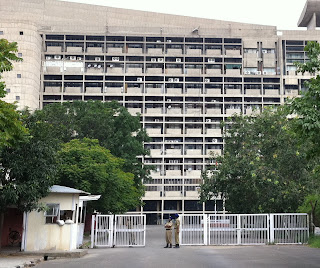By: Nithidon Kangsanan (Don)
A one-day trip in Chandigarh given me experiences and chance to learn and see the work of Le Corbusier, the greatest architects in a modern era who responded in planning the new city - Chandigarh.
Chandigarh is the city in India which built to replace Lahore – Punjab’s capital after the lost to Pakistan in the partition of British India in 1947. Chandigarh has been use to show the idea of India became independent and its move to modernity. This idea successfully shows through the use of material such concrete in illustrating India independent as the material itself already symbolize modernism. Thus, building also represents the adaptation of European Modernism in both styles and techniques.
During the day in Chandigarh, another important issue which clearly observed and shows the different between Chandigarh and other cities that we have been to is the traffic and how the road is being use and organized. The traffic in Chandigarh seems to flow better comparing to other cities. I think this can prove the success of 7Vs concept of road that Le Corbusier had planned. The roads which classify according to its functions to ensure efficient traffic circulation as well as giving the segregation from traffic’s pollution to residential areas.
However, I feel that Le Corbusier’s work in India seem to be his experimentation in working in hot climate. Also, India became a place where his attempt in maximizing the use of wind and sun in the building without mechanical devices occurred. The use of building elements such as brise- soleil (fig.1) has been use a lot onto his buildings as a shading device to control the amount of light to get into the building and this become one of Le Corbusier’s signature of façade design.
Though, in term of use – I think, it is not successful. Architecture; does not follow Le Corbusier’s planned. Thesedays, glass has been added-on to his buildings and fully air-con (fig.2-3). Due to climatic condition of strong sun, by allowing wind for natural ventilation it also brings heat into the building. This is where Le Corbusier’s intension in designing building without mechanical devices fails to perform its building function and interior air quality.
 fig.2 - elevation and section drawings of the building where it shows glass windows have been added to the building together with air-con units.
fig.2 - elevation and section drawings of the building where it shows glass windows have been added to the building together with air-con units.

No comments:
Post a Comment